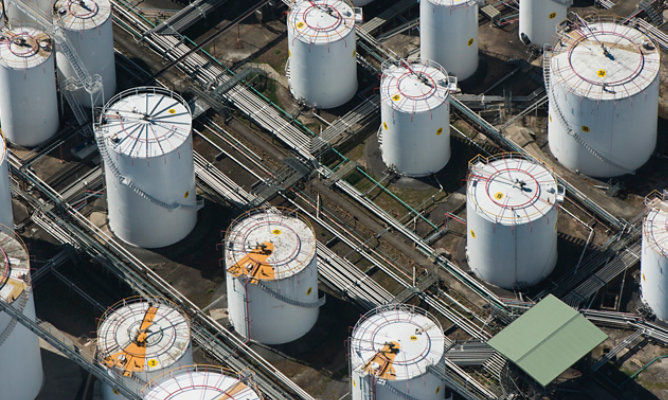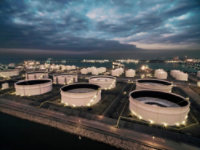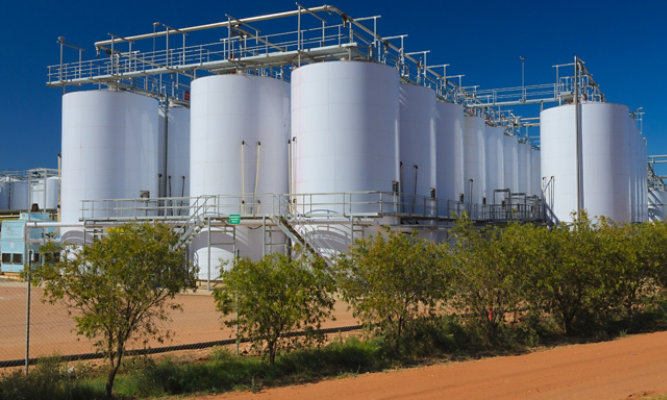
Selecting the Correct Tank Lining
Prevention is better than cure
Storage tank linings are designed to withstand chemical resistance, high temperatures and high pressure, as well as mechanical abrasion. Michael Harrison, global product director for linings at Sherwin-Williams, explains the importance of using the correct lining and how working with an expert manufacturer can ensure state-of-the-art application and inspection support.
Tank Lining Considerations
The need to maintain the structural integrity of large industrial storage tanks sounds like a no-brainer. It certainly should be, yet all too often they are left to deteriorate due to a failure to use the correct lining and/or carry out regular maintenance. The cost implications of having to take urgent and unplanned action to stop leaks and ensure storage tanks are structurally sound can be extremely costly, while fines for breaching environmental and health and safety legislation are significant. In 2017 the UK retailer, Tesco, was fined £8m after pleading guilty to a petrol leak from one of its filling station storage tanks, which saw 23,500 litres of petrol seep into the sewerage system and rivers from a site in Haslingden.
Short vs Long-term Gains of Selecting the Correct Lining
Storage tanks are used to hold a variety of commodities including water, wastewater, petroleum products, chemicals, and food products. Although glass reinforced plastic, thermoplastic and polyethylene tanks are gaining popularity, most storage tanks are constructed from concrete and steel – a material that is susceptible to corrosion attack. Without the proper protection mechanisms in place, steel tanks will naturally corrode in vulnerable areas through cracking and pitting, which is a form of localised corrosion.
There are instances where owners simply choose not to line their storage tanks – thinking short-term about the initial outlay of cost, rather than the long-term savings this action will generate. Others will change the contents of a tank without carrying out a full inspection to ascertain whether the existing lining is suitable or fit for purpose. Even storing similar materials can lead to complacency. For example, the recent move to E10 petroleum from E5 means that tanks are exposed to higher levels of ethanol, which can cause degradation of inferior linings and steel welds in tanks.
Planning for Change with your Tank Coatings
A typical 30m diameter tank will contain more than 7 million litres of fluid which can represent a massive financial outlay. It therefore makes sense to put in as many measures as possible to protect them in order to maximise any return on investment. Although the standard inspection and maintenance period of storage tanks is 10 years, this might not be enough if the correct lining isn’t used in the first instance
It’s important to remember that there is no ‘one size fits all’ when it comes to storage tank linings. The best solution will depend on a number of factors including – but not limited to – the chemical being stored (and its purity), the condition of the substrate in the tank, and the conditions during its application.
Storage tank lining is a highly specialist area, so getting it right first time is vital. Working with a manufacturer that has a technical service team that understands the customer needs now - and in the future - will ensure that the correct lining is used. Asking the right questions about substrate composition and condition, exposure conditions, chemicals present and in what concentrations, as well as the temperature and pressure data, can ensure that approval requirements are met, fewer inspections are needed and a rapid return on investment is achieved.
Maximising the Life of Your Tank and its Lining
To maximise the operational life of storage tanks, the protective coatings sector has focused on the use of long-life, high-performance linings to reduce internal corrosion. Cutting edge solutions are solvent free, which not only makes it safer for those applying the linings, but also reduces the number of coats required. Similarly, as there isn’t any solvent in the coatings there is nothing that may lead to breakdown over time.
Being able to ensure the quality of the lining application by pinholes, resolve missed areas and ensure uniform coverage optimises the effectiveness of the lining. To facilitate this, linings have been developed that use a fluorescing pigmentation for instant verification of missed areas under eye-safe ultraviolet light. This allows linings to be inspected during application to create a high-quality finish with minimal downtime, improves productivity of coating inspection and extends the service life of the coating by ensuring correct film thickness is achieved.
Keeping Your Storage Tank Operational is Vital
Supply chain issues have meant that safely and securely storing commodities is vital to the global economy. Therefore, the role of storage tanks should not be underestimated. Making the right decisions when it comes to selecting storage tank linings can address product performance and life expectancy, meet health and safety requirements, and assist with technical servicing. Manufacturers that offer a wide range of solutions, while providing advice and support during the application process, can help ensure that storage tanks stay fully operational, are less prone to failure and have the maximum possible lifespan.
Discover More
Industry Expertise and Innovation
Explore customised solutions we deliver for customers to address their project and application challenges.
Article
23 March 2020
Setting the Standard - A Case for Criteria that Simplify Process Vessel Lining Selection

Technical Service
We're here to ensure your entire project is running smoothly and efficiently.
LEARN MOREProduct Lookup
Find out more about our innovative coatings for a variety of industries.
FIND A PRODUCT







